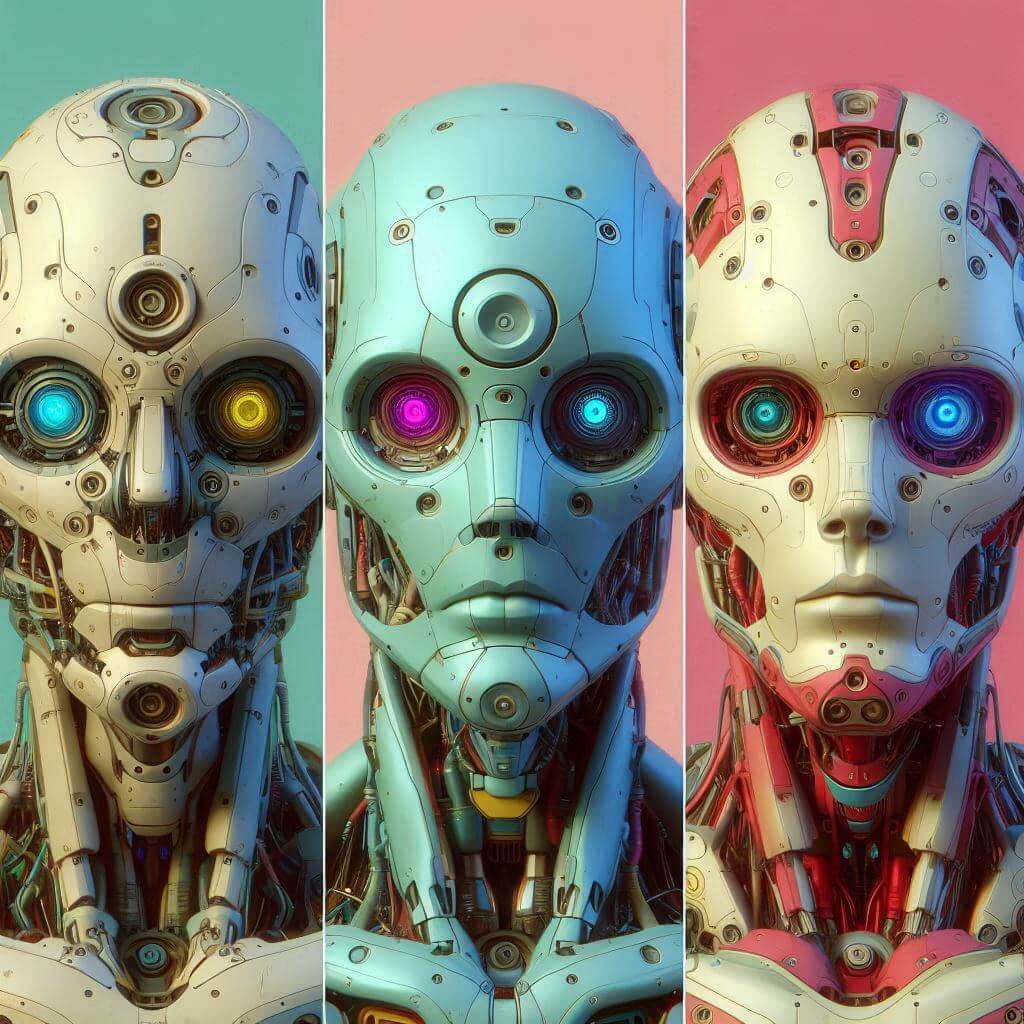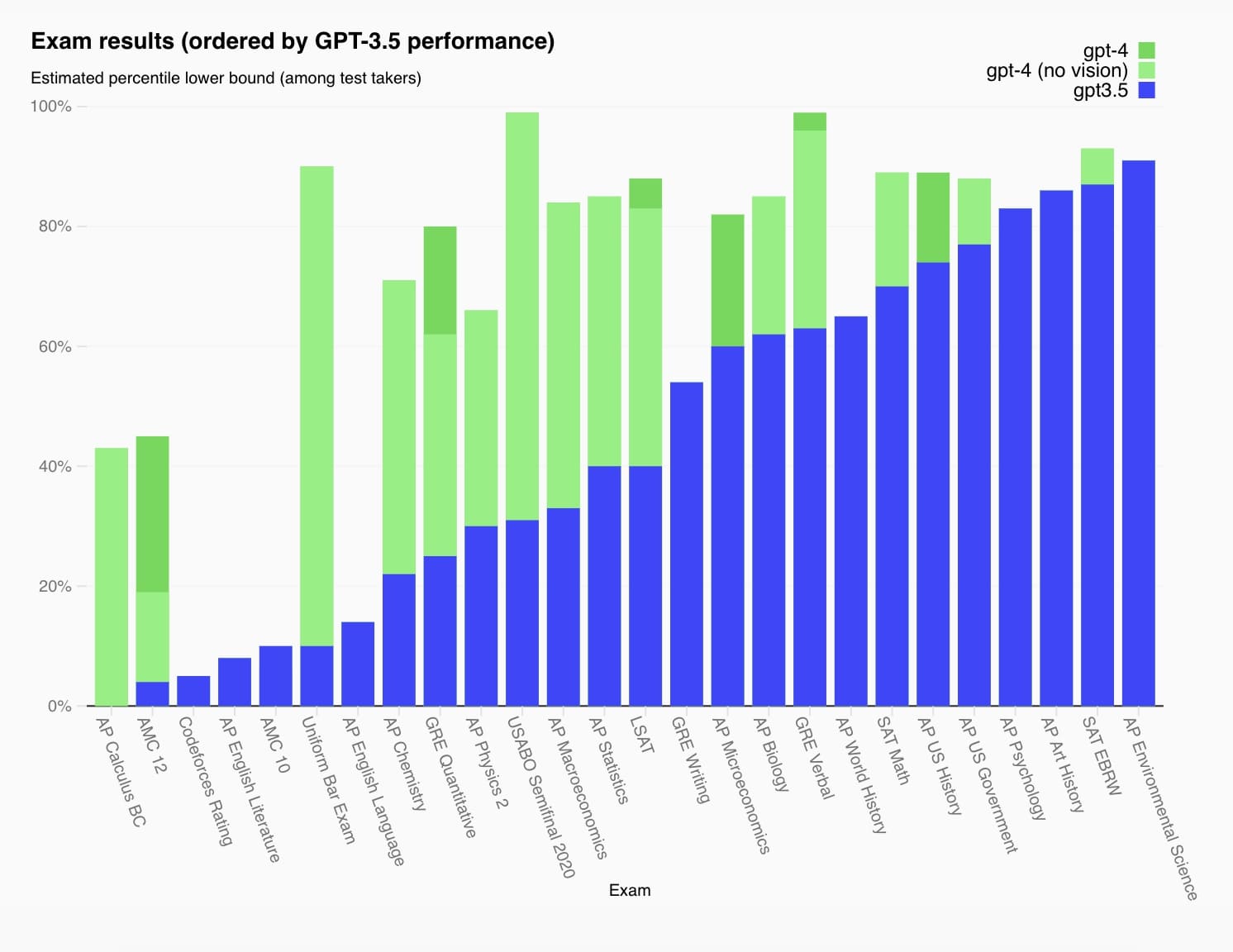Exploring ChatGPT Models: A Look at Every Release Version
Unless you spent the last two years living under a rock, you’ve likely heard of ChatGPT and its underlying generative AI models — GPT-3.5 and GPT-4. But while t...
Unless you spent the last two years living under a rock, you’ve likely heard of ChatGPT and its underlying generative AI models — GPT-3.5 and GPT-4. But while the 2022 debut of OpenAI’s flagship chatbot made waves around the globe, it was merely one act in a saga of innovation.
(ok, let's drop the lofty tone)
In today’s article, we take a closer look at iterations of OpenAI’s model, including GPT-3.5, GPT-4, and GPT-4 Turbo. We’ll also try to predict how far off GPT-5 is and what it can bring to the table.

🧑🚀 The Launch of GPT-3.5: Major Breakthrough
In 2015, a team of tech pioneers led by Elon Musk and Sam Altman launched a non-profit research organization called OpenAI. Their mission? To make AI a force for good in the world.
The team began their journey with the release of a pivotal research paper “Improving Language Understanding by Generative Pre-Training” which introduced the concept of transformers.
If you're new to the topic, transformers are a kind of neural network, a system modeled after the human brain that helps machines learn from data and understand the relationships in language.
The paper laid the groundwork for a trinity of “foundational models” that included GPT-1 in 2018, GPT-2 in 2019, and GPT-3 in 2020. The latter was later fine-tuned for conversational interactions and integrated with a chat-based interfaced — ChatGPT. And this is where things get interesting.
Unlike previous models, ChatGPT powered by GPT-3.5 offered the first, conversational interface for interacting with generative AI. It brought AI into the mainstream and allowed everyday users (like your uncle who still types with one finger) to experience the potential of the technology.
The model featured 175 billion parameters — AI's learning settings — and was trained on a diverse dataset, reportedly around 45TB of text data. ChatGPT training data included a wide variety of internet sources, such as web pages, articles, and books, with over 90% of the data in English.
🦾 GPT-4: A Significant Upgrade
Before the excitement from ChatGPT's launch faded, Sam Altman and team hinted at an even more capable model that could potentially deliver a richer, more nuanced understanding of language.
GPT-4, the successor to GPT-3.5, launched on March 14, 2023. It was initially made available to a select group of users as part of the paid ChatGPT Plus subscription and OpenAI's developer API.
So, GPT-3.5 vs GPT-4. What kind of natural language processing advancements are we looking at?
The new model offered an expanded context window for even better context comprehension. It also supported multimodal AI abilities, which meant that it could accept both text and image inputs.
OpenAI called GPT-4 its "most advanced system" yet. The model was trained on both public and licensed data and used about 13 trillion tokens — chunks of text, like words or parts of words, used by AI for processing language — which stack up to roughly 1.8 trillion parameters.
/
When GPT-4 launched, it hit some impressive benchmarks, like scoring in the top 10% on a simulated bar exam, way ahead of GPT-3.5. It answered 73.3% of nephrology questions correctly and was 40% better in factual tests. It scored 1410 out of 1600 on the SAT, much higher than the 2021 average.

GPT-4 contributed to a wide, bolder implementation of LLMs across various industries. Its enhanced capabilities allowed it to be integrated into enterprise applications, where it improved functions like customer support, sales, marketing, and data analysis, just to name a few.
⚡ GPT-4 Turbo: Efficiency with Performance
In November 2023, OpenAI announced an incremental improvement of its flagship model called GPT-4 Turbo. The changes? A 128K context, an equivalent of more than 300 pages of text, extended knowledge cut-off (April 2023), optimized performance, and lower operational costs.
While not a groundbreaking leap from GPT-4, the refinements make ChatGPT Turbo model significantly faster and more efficient, especially for handling complex tasks.
The launch initially faced criticism as some users noted a dip in quality compared to its predecessor, a likely tradeoff for enhanced performance. User benchmarks showed Turbo scored slightly lower on SATs, which made it less effective for tasks like coding compared to GPT-4.
💬 GPT-4o and GPT-4o Mini: Optimized for Efficiency
In May 2024, OpenAI introduced the GPT-4o model, its pared-down variant, GPT-4o Mini, and a desktop version of ChatGPT during the company’s Spring Update video event.
GPT-4o is a performance-optimized version of GPT-4, designed to balance power and efficiency. It maintains key features and large context windows but is more cost-efficient and faster in real-time applications. It also brings a small revolution of its own to human-AI interactions.
In a series of eerily realistic demos, GPT-4o responded to audio inputs almost instantly, with response times close to human levels (an average of 320 ms compared to 230 ms).
A month after the event, OpenAI introduced the pared-down model GPT-4o mini which offers similar capabilities but is over 60% cheaper than previous OpenAI language models. With a context window of 128K tokens, it still manages to outperform other small models in reasoning tasks.
🤔 GPT-4o1 and GPT-4o1 Mini: The Last in Line?
Last month, OpenAI announced yet another pair of intermediate models — o1 and o1-mini. The models are tweaked to “spend more time thinking before they respond," which helps with complex reasoning.
According to OpenAI, GPT-o1 performs at a PhD-level student in areas like physics, biology, and chemistry. The new model also boasts improved performance in math; during tests, it solved 83% of problems in the International Mathematics Olympiad compared to 13% of GPT-4o.
Earlier this year during a TED AI conference in San Francisco, OpenAI's leading research scientist Noam Brown said that o1s performance in STEM tasks is possible thanks to “system two thinking.”
"One way to think about reasoning is there are some problems that benefit from being able to think about it for longer. You know, there’s this classic notion of System 1 versus System 2 thinking in humans. System 1 is the more automatic, instinctive response and System 2 is the slower, more process-driven response. And for some tasks, you don’t really benefit from more thinking time."
🔮 Potential Future Versions: GPT-5 and Beyond
What can we expect from OpenAI in 2025?
Will we see a brand-new model or just AI model update of the current lineup of ChatGPT versions?
In a podcast with Lex Friedman earlier this year, Sam Altman revealed that there's no fixed timeline for GPT-5. However, the company is actively working on expanding GPT-4 capabilities.
This seems to be consistent with a May blog update published on OpenAI's blog:
“OpenAI has recently begun training its next frontier model and we anticipate the resulting systems to bring us to the next level of capabilities on our path to AGI. While we are proud to build and release models that are industry-leading on both capabilities and safety, we welcome a robust debate at this important moment.”
Despite recent rumors suggesting a December release for GPT-5, Altman quickly shut down those reports on X, calling them "fake news out of control." He added:
“dw plenty of great stuff coming your way, just offends me how media is willing to print random fantasy” — Sam Altman (@sama) October 25, 2024
We're unlikely to see GPT-5 launch anytime soon. But the recently closed funding round that lifted OpenAI's valuation to $157 billion means that we can expect some innovation in the coming months.
As one r/singularity user observes:
“The gap between GPT-3 and GPT-4 release was 33 months. If you count 33 months from GPT-4 release, that equals December 2025 for GPT-5.”
The timeline predictions are reinforced by the developments of GPU technology:
“The above also lines up with the fact that the Nvidia CFO said himself recently that the new B100 and B200 GPUs "would not ramp up until 2025." and OpenAI only recently received the first H200 HGX in the past few months.”
So, what do we know so far?
GPT-5 is rumored to build on the multimodal AI capabilities introduced in GPT-4, with potential improvements in real-time interactions, handling more tokens, and refining ethical safeguards.
With the increasing demand for fine-tuning and customization, we may also see a more decisive shift toward agentic workflows, with software agents acting as decision-making engines for LLMs.
Computer scientist and co-founder of Google Brain Andrew Ng believes that agentic systems, rather than more powerful singular models, may push the needle of innovation in the field:
“It turns out that if you use GPT-3.5 with zero-shot prompting, it gets it 48% right, but if you take an agentic workflow and wrap it around GPT-3.5, I say it actually does better than even GPT-4, and this has significant consequences for how we approach building applications.”
At this point, OpenAI leaves us with more questions than answers. But it's clear the innovation is far from fizzling out. The focus on agentic workflows and new, more powerful models keeps pushing us closer to AGI. We're just waiting to see how these developments translate into practical tools.
💡 The Impact of ChatGPT on AI and NLP
Each version of ChatGPT has advanced human-AI interactions. GPT-3.5 brought conversational AI to the mainstream. GPT-4 offered better context and multimodal AI capabilities, and GPT-4 Turbo and subsequent ChatGPT language models focused on efficiency and cost in handling complex tasks.
What's the next step in this journey?
We can only guess. But if you want to get a taste of the future and supercharge your work, try Taskade AI, the most complete smart project & task management platform, currently powered by GPT-4o.
Sign up for Taskade and join the AI revolution! 👈
🤖 Custom AI Agents: Develop custom, autonomous AI agents with tailored knowledge, skills, and powerful integrations. Deploy agents in projects, automations, and custom chats.
👥 AI Teams: Organize your AI agents into specialized squads to leverage their collective expertise. Interact with multiple agents within chats to get the most accurate results instantly.
⚡️ Smart Automations: Implement AI-powered automation with pre-designed templates and customizable actions that let you seamlessly integrate with apps like Gmail, HubSpot, or Slack.
🪐 One App to Rule Them All: Simplify your digital toolbox and manage everything in one place. Centralize tasks, notes, tools, and documents to keep your work aligned.
And much more...
